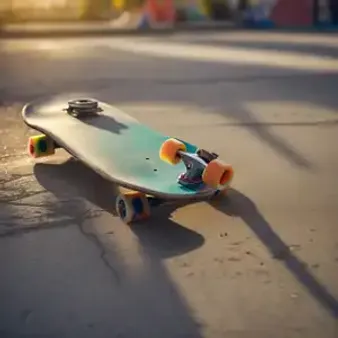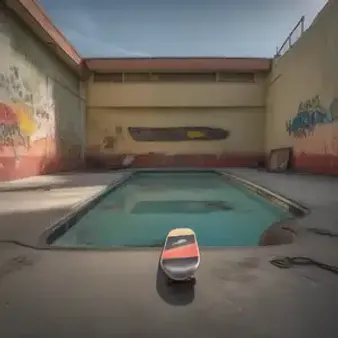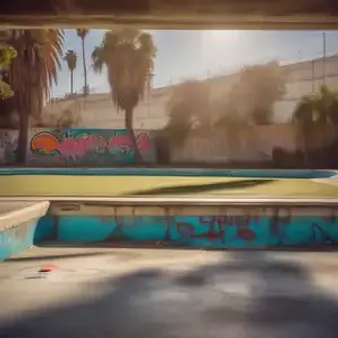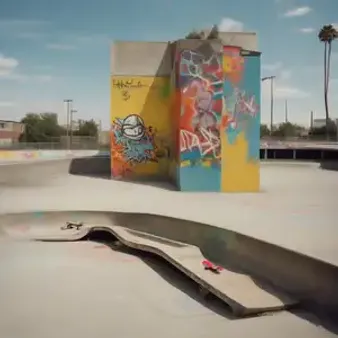Table of Contents
kizworld takes you back in time to the 1970s when skateboarding exploded onto the scene. From empty swimming pools to the streets of California, 1970s skateboarders redefined what was possible on four wheels. Join us as we explore the history, culture, and lasting impact of these pioneers.
Feature | Details |
|---|---|
Era | 1970s |
Key Figures | Tony Alva, Stacy Peralta, Jay Adams |
Style | Laid-back, rebellious, surf-inspired |
Innovations | Urethane wheels, low-riding trucks, new deck shapes |
Impact | Transformed skateboarding from fad to global phenomenon |
The Rise of 1970s Skateboarders
Imagine a time when skateboarding was just starting to gain traction, literally! The 1970s was a pivotal decade for skateboarding, witnessing its transformation from a simple sidewalk pastime to a full-blown cultural phenomenon. It was a time of innovation, creativity, and a whole lot of rebellious spirit. Think of it like this: skateboarding was like that new band everyone was talking about, suddenly exploding onto the scene and changing everything.
The early 70s saw a major breakthrough with the invention of urethane wheels. Remember those clunky clay wheels from before? Well, urethane was like a magic trick! These new wheels provided smoother, faster, and grippier rides, allowing skateboarders to push their limits and try new things. It was like going from riding a clunky tricycle to a high-performance race car! Suddenly, skateboarders could carve up sidewalks, bomb hills, and even take on empty swimming pools with newfound confidence.
Skateboard Part | Old Tech | New Tech |
|---|---|---|
Wheels | Clay or metal | Urethane |
Trucks | Basic, high-riding | Precision, low-riding |
As the 70s progressed, skateboarding's popularity soared, attracting a diverse crowd of enthusiasts. Kids, teenagers, and even adults were drawn to the freedom and thrill of riding. It wasn't just about the tricks, you know? It was about the camaraderie, the shared passion, and the sense of belonging to something truly unique. Think of it like joining a cool club, but instead of secret handshakes, you had gnarly moves on your surf skateboard! Plus, you could check out awesome skateboard backpacks to carry your gear.
The Rise of 1970s Skateboarders
Style and Culture of 1970s Skateboarders
The 1970s skateboarding scene wasn't just about the tricks, it was like a whole new way of life! Imagine a bunch of kids with skateboard backpacks, hanging out in empty swimming pools, pulling off cool moves on their boards. They had this laid-back, rebellious style, kind of like surfers catching waves, but on concrete! It wasn't about fancy uniforms or stuffy rules, you know? It was all about individuality and expressing yourself through your skateboarding.
Style and Culture of 1970s Skateboarders
Iconic 1970s Skateboarders
The 1970s skateboarding scene was bursting with talented individuals who pushed the limits of what was possible on a skateboard. These weren't just kids messing around on boards; they were pioneers, artists, and athletes who shaped the future of skateboarding. Think of guys like Tony Alva, the daredevil who took skateboarding to new heights, literally! He was known for his fearless style, conquering empty swimming pools like they were giant waves. Then there was Stacy Peralta, a smooth operator with a style as cool as a California sunset. He made skateboarding look effortless, flowing through lines with grace and precision. And let's not forget Jay Adams, the rebel with a cause, whose raw energy and aggressive style influenced generations of skaters. These guys weren't just skateboarders; they were legends in the making!
Iconic 1970s Skateboarders
The Legacy of 1970s Skateboarders
The 1970s were a wild ride for skateboarding, and those radical dudes on boards left a mark that's still felt today. It's like they planted a seed that grew into this awesome tree with branches reaching all over the world. Think about it: without those pioneers, we wouldn't have the skateparks, the competitions, the awesome gear, or even Tony Hawk!
From Sidewalks to the X Games
Those 1970s skateboarders were like the rock stars of their time, inspiring kids to grab boards and try new tricks. They showed everyone that skateboarding wasn't just a fad; it was a way to express yourself, be creative, and push boundaries. They turned empty swimming pools into skateparks, and their style influenced everything from fashion to music. Thanks to them, skateboarding went from sidewalks to the X Games, and it's still evolving today. You can learn more about park skateboarding and its history.
1970s Skateboarding | Modern Skateboarding |
|---|---|
Empty pools and sidewalks | Dedicated skateparks |
Basic wooden boards | High-tech boards and gear |
Grassroots competitions | Global events like the X Games |
A Global Phenomenon
Today, skateboarding is everywhere! It's a global phenomenon with millions of fans, and it all started with those pioneers who dared to be different. They showed us that skateboarding is more than just a sport; it's a culture, a community, a way of life. Whether you're into street skating, vert, or just cruising around, you're part of a legacy that began back in the 1970s. Learn more about the vert style of skateboarding and its origins.
- How to get started with skateboarding
- How to train like a skateboarder
- The best skateboarding gifts and souvenirs
The Legacy of 1970s Skateboarders
Final Thought
The 1970s marked a turning point for skateboarding, transforming it from a simple pastime into a global phenomenon. The innovations, style, and rebellious spirit of 1970s skateboarders paved the way for the sport we know and love today, inspiring generations of skaters to push boundaries and express themselves on four wheels.